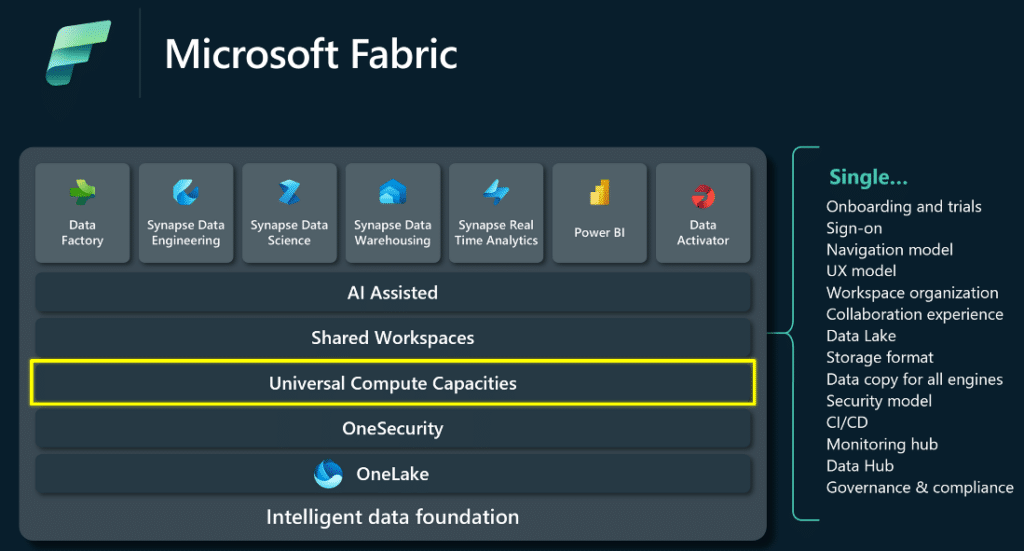Microsoft has recently introduced Microsoft Fabric, a novel data storage and management solution. This platform incorporates various functionalities such as a data lake, diverse computing configurations, sophisticated data governance, and an extensive application surface.
Microsoft Fabric Capacity stands out as a key element within the comprehensive suite of Fabric components. This article delves into the essence of Fabric capacities, their significance and explores how strategic approaches like bursting and smoothing can enhance data performance.
What are capacities in Microsoft Fabric?

Fabric is a single data platform with shared architecture, governance, billing, and experiences. Capacities provide the processing power behind all of these experiences. They can be readily expanded with an SKU upgrade and provide a straightforward, uniform method of scaling resources to match customer demand.
Simply put, Microsoft Fabric capacities are the foundation of the Microsoft Fabric platform, providing the compute resources that power all the experiences in the platform, from data modeling and data warehousing to business intelligence and machine learning. Capacities are also used to run other Microsoft services, such as Azure Data Studio and Power BI Desktop.
Each capacity is a dedicated set of resources that is reserved for exclusive use. This means you can be confident that your applications and workloads will have the resources they need to run smoothly. Capacities are also scalable, so you can easily add more resources as your needs grow.













